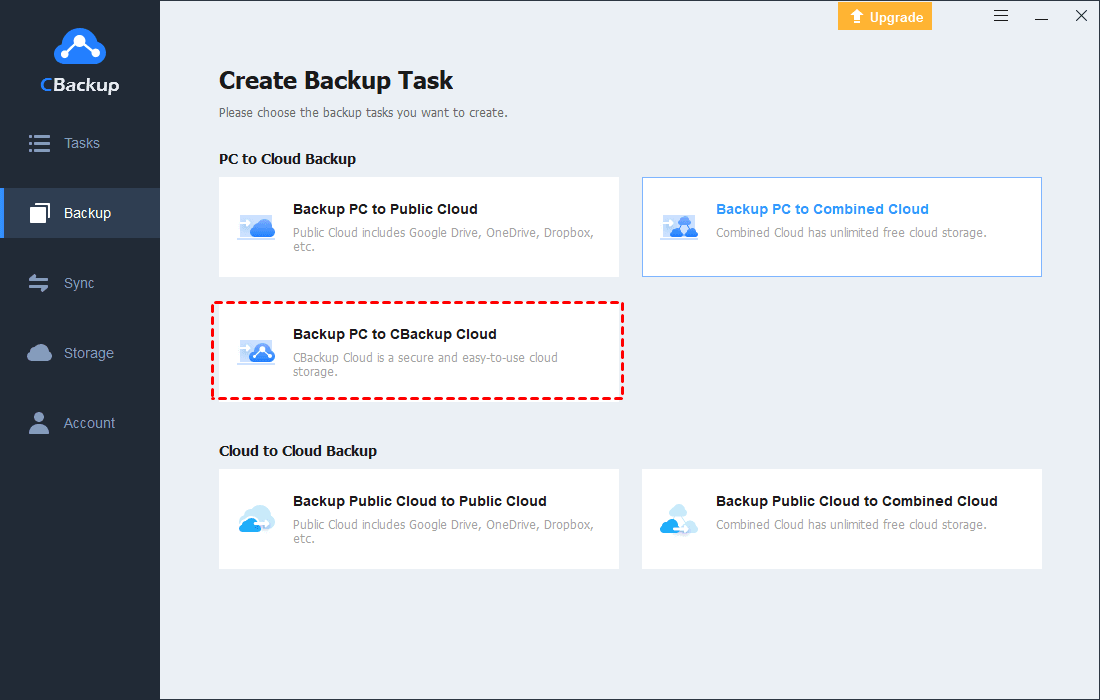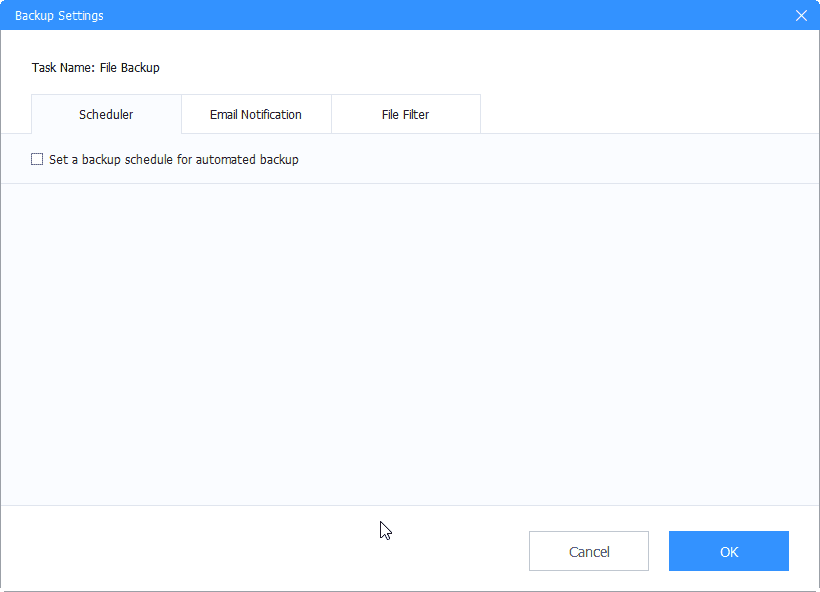Tape Backup vs Cloud Backup: Expose The Benefits and Costs
Discover the advantages and disadvantages of tape backup vs cloud backup. Simplify your data protection strategy with CBackup today!
Does Anyone Still Backup to Tape?
In today's digital age, the landscape of data backup has undergone significant transformation. While tape backup was once the go-to method for data storage and backup, the rise of cloud technology has raised questions about its relevance in modern times. However, despite advancements in cloud backup solutions, tape backup continues to serve a purpose in certain scenarios.
Today, let’s take an in-depth analysis of tape backup vs cloud backup, understand their respective advantages and disadvantages, and find the best backup solution!
Tape Backup vs Cloud Backup: Which is The Winner?
When comparing tape backup and cloud backup solutions, you must weigh the pros and cons of each. Although tape backup is the most traditional backup solution, it has shortcomings in scalability and retrieval speed. On the other hand, as a new backup method, what are the disadvantages of cloud backup when it provides automatic backup, scalability, and remote access functions?
Let's analyze the pros and cons of tape backup vs cloud backup:
Tape Backup
Pros:
- Cost-effective for large data volumes.
- Long-term storage capabilities.
- Offline accessibility provides air-gap security.
- Reliable for archival purposes.
Cons:
- Manual intervention and maintenance required.
- Limited scalability.
- Slower retrieval speed compared to cloud backup.
- Vulnerable to physical damage and environmental factors.
Cloud Backup
Pros:
- Automated backups ensure regular data protection.
- Scalability allows for seamless expansion of storage capacity.
- Remote accessibility enables data access from anywhere with an internet connection.
- Enhanced security measures protect against unauthorized access and cyber threats.
- Recovery capabilities ensure data recovery in the event of hardware failures or system outages.
Cons:
- Dependency on internet connectivity.
- May require compliance with data residency regulations.
Well, it's evident that cloud backup, emerging as a dominant force, possesses the potential to supplant tape backup entirely, boasting significant advantages in both security and flexibility. As technology continues to evolve, embracing cloud backup solutions ensures not only robust data protection but also adaptability to the ever-changing demands of the digital landscape.
CBackup- Your First Cloud Backup Choice
In the realm of cloud backup solutions, CBackup stands out as the ultimate choice for secure and flexible data backup to the cloud. With CBackup, users can enjoy a seamless backup experience with a wide range of features and benefits.
Let’s unlock the power of backup to cloud with CBackup, the leading solution for protecting your digital assets. Below are why CBackup should be your first choice for cloud backup:
- Backup to Public Cloud: Seamlessly backup your data to leading public cloud storage providers, including Google Drive, Dropbox, and OneDrive.
- Cloud Disk Data Migration: Effortlessly migrate data between cloud storage services, ensuring seamless transition and data continuity.
- Unlimited Cloud Disk Space: Enjoy unlimited cloud storage space for your backups, eliminating concerns about storage limitations.
- Customized Backup Options: Tailor your backup settings to meet your specific needs, including scheduling, file filter, and email notification.
- Data Security: 100% secure encrypted transmission, using 256-bit AES encryption to protect your every backup.
Guide to Create Cloud Backup with CBackup
Step 1: Sign Up and Log In
Visit the CBackup website and sign up for an account.
Once registered, log in to your CBackup account in the desktop app.
Step 2: Create a Backup Task
Go to the "Backup" tab and click on the "Backup PC to CBackup Cloud" button.
Step 3: Determine Backup Source
Choose the files or folders you want to back up.
Step 4: Customize Your Backup
Customize your backup settings, including scheduling, file filter, and email notification.
Step 5: Start Backup
Once you've configured your backup task, click on the "Start Backup" button to initiate the backup process.
By following these simple steps, you can leverage the power of CBackup to protect your data and safeguard against unexpected data loss or corruption.
Addressing Common Concerns
In the final segment of our exploration, we address some common concerns surrounding tape backup and cloud backup solutions. By providing clarity on key issues and debunking myths, we aim to empower users to make informed decisions about their data backup strategies.
#1. Is tape backup still relevant in the age of cloud computing?
While tape backup has been a stalwart in data storage for decades, its relevance in today's cloud-centric environment is diminishing. While tape backup may still have niche applications, many businesses are transitioning to cloud backup solutions for their superior features and ease of use.
#2. What security measures are in place to protect data stored in the cloud?
Cloud backup providers like CBackup implement robust security measures to safeguard data stored in their infrastructure. These measures typically include encryption, both in transit and at rest, to protect data from unauthorized access.
Conclusion
In the battle between tape backup vs cloud backup, the latter emerges as the clear winner, offering superior scalability, accessibility, and security. With CBackup leading the charge in cloud backup innovation, users can rest assured knowing their data is safe, secure, and easily accessible from anywhere.
Whether you're a business looking to streamline your backup process or an individual seeking peace of mind, CBackup is your ultimate cloud backup companion. Say goodbye to the limitations of tape backup and embrace the flexibility and reliability of cloud backup with CBackup.
Free Cloud Backup & Sync Service
Transfer files between cloud drives, combine cloud storage to gain free unlimited space
Secure & Free







